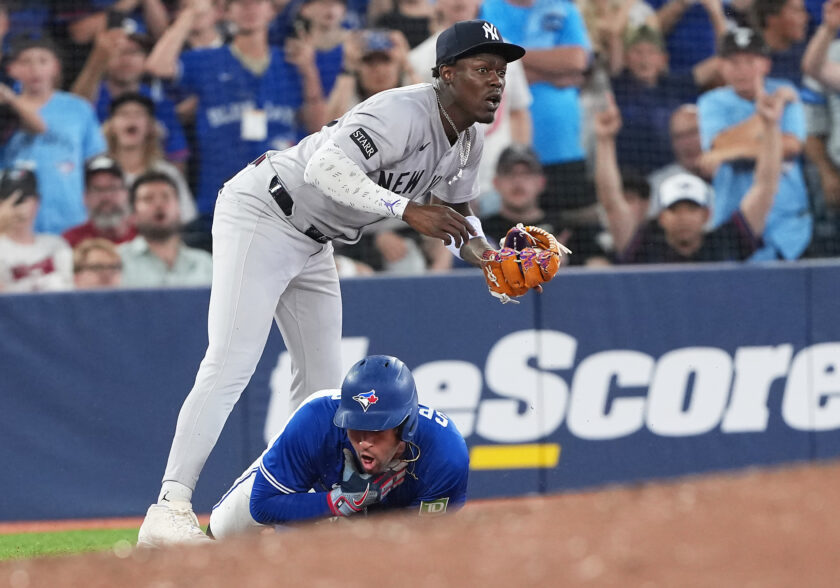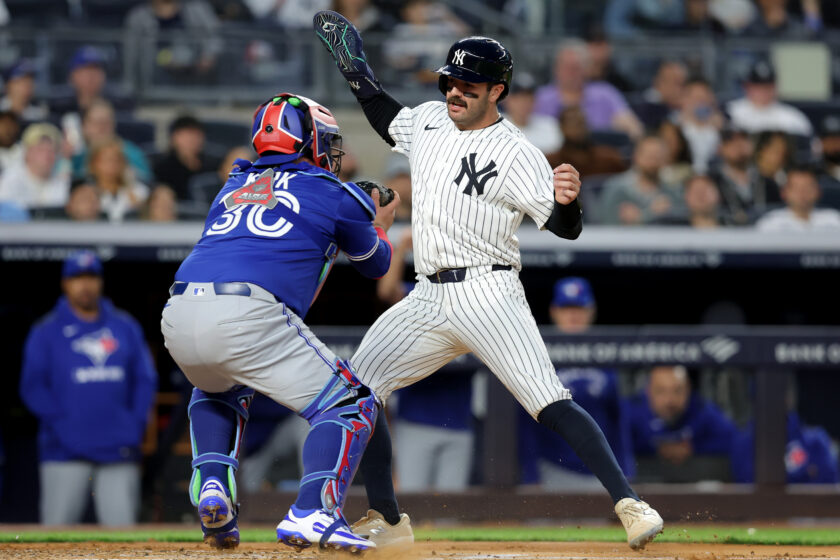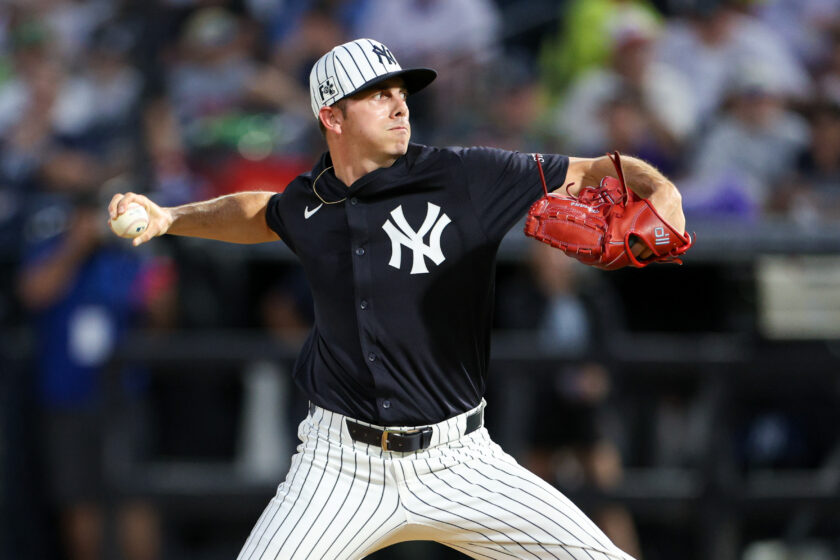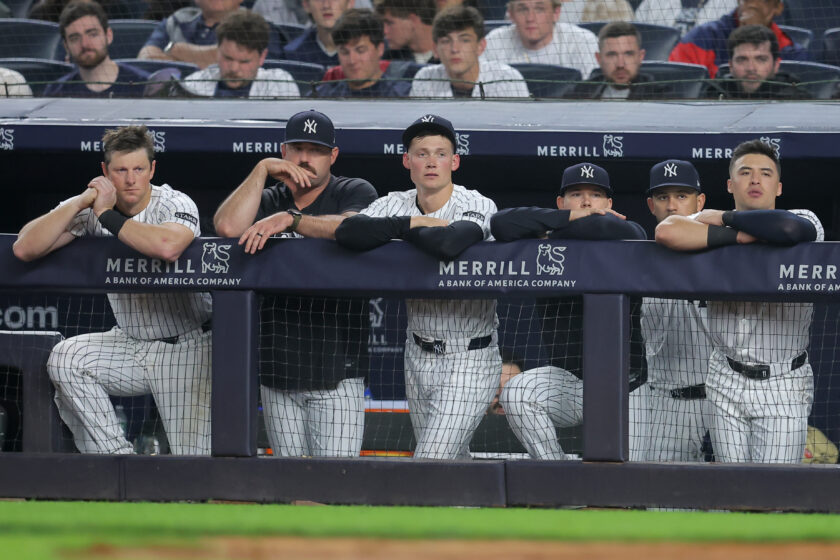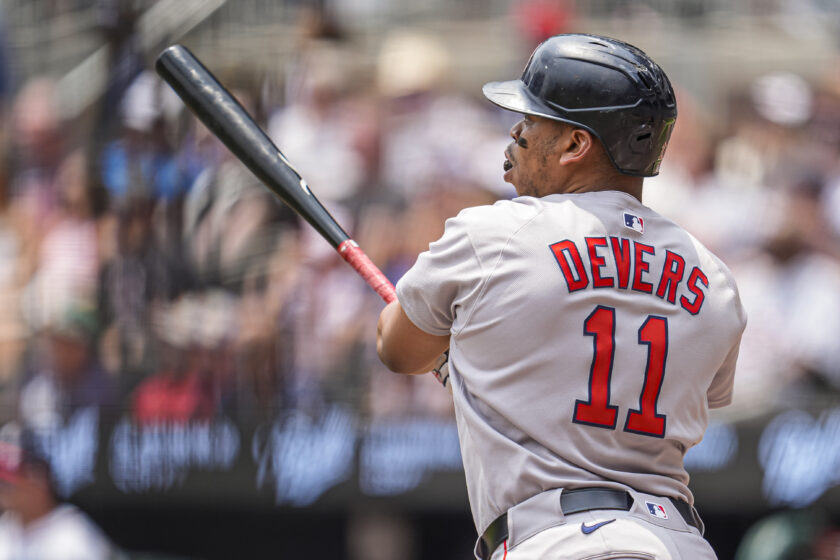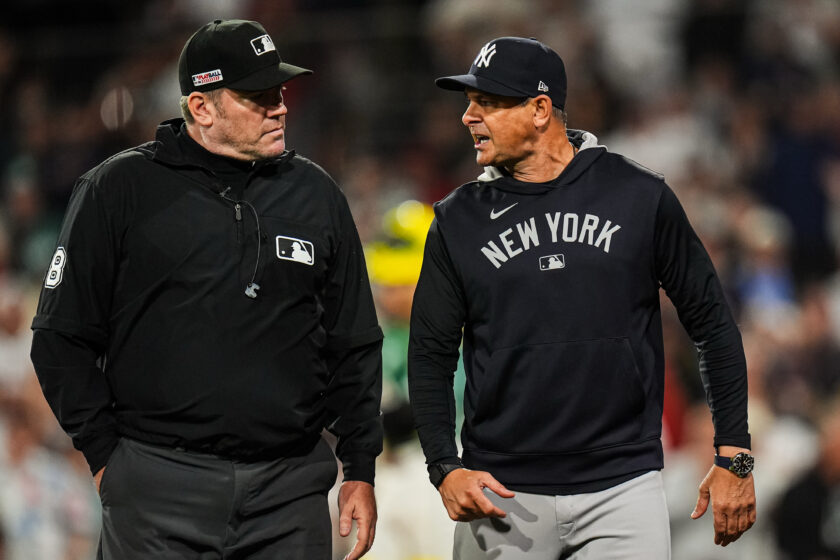Does a New York Yankees, Ivan Nova reunion make sense?

With no serious avenue to find a serious benefactor in the rotation, should the New York Yankees give an old friend a call?
OK, this may prompt some New York Yankees‘ fans to shout out in outrage but no matter you react, we can all agree New York could use maintenance for the starting rotation.
After all, while having the lights out closer in Aroldis Chapman to help the rebuilding Yankees “stay in it” is neat, even “No-Runs DMC” went to waste because the rotation couldn’t get the ball in their hands.
That theme appears unchanged as they head into 2017.
[sc name=”Yankees Link Related” link=”https://elitesportsny.com/2016/12/08/new-york-yankees-four-things-take-aroldis-chapman-signing/” text=”Four takeaways from the Aroldis Chapman signing” ]They have plausible locks in Masahiro Tanaka, who managed the third best ERA in the AL in 2016, CC Sabathia, who’s coming off his season since 2012, and Michael Pineda, who was the AL Leader in K/9.
After that, though, the depth chart consists of Luis Severino, Luis Cessa and Chad Green — who will battle for the last two spots in Spring Training.
Their “fall back” options include Adam Warren, Bryan Mitchell and youngsters that are knocking on the door in Triple-A but as they get set to report in 66 days, some kind of external option should be pursued.
Could a familiar face in Ivan Nova help that cause?

Once upon a time (in 2004), Nova came to the Yankees organization as an international free agent and finally made his major league debut on May 13, 2010, at age 23.
In his first full season as a major leaguer, the righty went 16-4 with a 3.70 ERA in 2011 which featured a stretch of nine games from June 3 to August 10 in which we went 7-1 and maintained a 3.09 ERA.
Following a handful of mediocre starts, he finished his stellar year with a 2.45 ERA and 29 strikeouts in his final seven starts. Nova then got the win in Game 1 of the ALDS that year against the Detroit Tigers.
Nova would only go on to have one sub-4.00 ERA season (2013) and be traded on August 1, 2016, to the Pittsburgh Pirates for Tito Polo and Stephen Tarpley.
In seven years with the Bombers, the native of Palenque, San Cristobal owned an overall record of 53-39 in 113 total games with an overall strikeout per nine innings ratio of 6.7.
Tommy John surgery did slow him down towards the end of his Yankees’ stint but the soon-to-be 30-year-old revealed massive correction after the trade to the Pirates.
[sc name=”Yankees Center 2″ ]In 11 starts following the trade, the former rookie of the year candidate went 5-2, maintained a 3.06 ERA while striking out 52 batters compared to just three walks (17.33 K/BB ratio).
He even tossed two complete games while sporting his new uniform — a feat no Yankees’ starter accomplished in 2016.
Have the Pirates actually “fixed” Ivan Nova? Did he just need a change of scenery? What made him so solid in the NL Central?
Well, part of his success came from a seven-game stretch from Aug. 12 to September 13 (4-0, 2.18 ERA, 38 K’s). [sc name=”Yankees Center Right” ]
During that span, Nova’s use of his fastball declined from 15.89% in the first half to 7.85% (according to Brooks Baseball) in the aforementioned stretch of dominance. His sinker, curve, and changeup all saw jumps.
With that particular mix and increase usage of his secondary pitches, his opponent’s Isolated Power (ISO) — a measure of a hitter’s raw power and tells you how often a player hits for extra bases — saw a massive drop.
In New York last season, the opposition’s ISO off of Nova’s fastball stood at .367 but upon being dealt, it shot down to zero thanks to the healthier mix of the sinker (which also saw a drop in ISO) and other weapons of his arsenal.
That’s the reason why you saw a dip in home rate from 1.8 per nine to 0.6. So, yeah, perhaps Pirates’ pitching coach Ray Searage did “fix” Ivan Nova.
Back to the main question: does a reunion make sense? Sure, but at what cost?
It would be terrific if New York could ink him to a one-year, low-cost deal and evaluate how he pitches to his strengths over the course of 162 games.
Nonetheless, his abbreviated stint in Pittsburgh warrants a multi-year deal extension and will probably earn more than he’s worth thanks to the inadequate market he finds himself in.
Spotrac estimates his market value to be able to obtain a multi-year deal with annual earnings of $12.7 million. After the signings of Chapman and Matt Holliday, that doesn’t seem like the move Cashman will be prepared to make.
[sc name=”Yankees Link Next” link=”https://elitesportsny.com/2016/12/09/the-new-york-yankeesred-sox-rivalry-is-getting-new-life-this-offseason/” text=” Yankees/Red Sox rivalry is getting new life this offseason” ] [sc name=”Yankees Center 2″ ][sc name=”Kouroupakis Footer” ]
Christian Kouroupakis covers the New York Yankees and is the Editorial Director for ESNY. Interact with him and view his daily work by “liking” his facebook page and follow him on Twitter. All statistics are courtesy of Baseball Reference.com unless otherwise noted. Don’t hesitate to shoot him an email with any questions, criticisms, or concerns.

